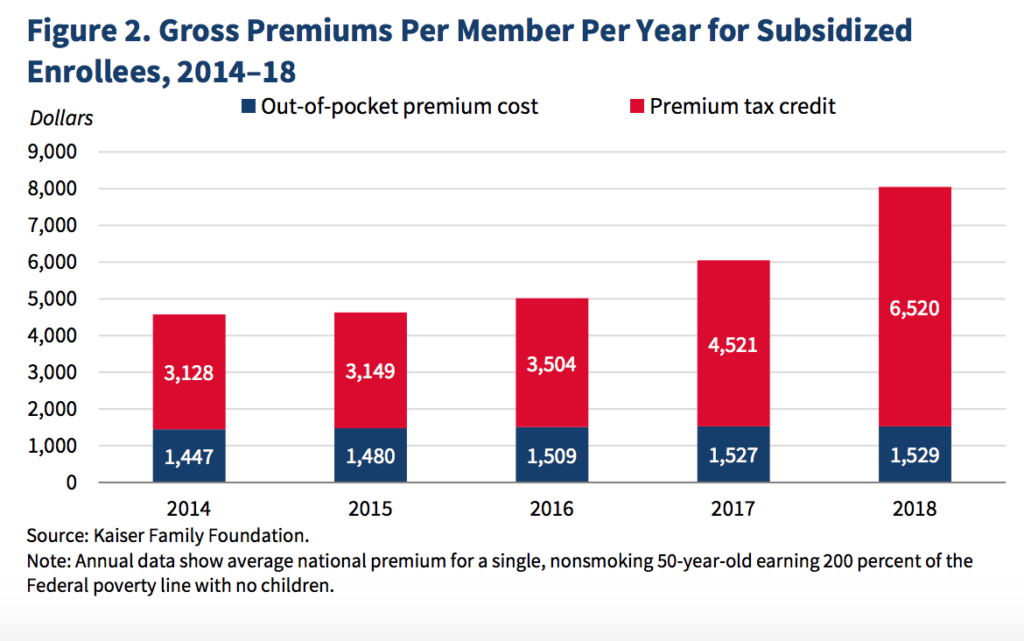According to a February 2019 report, the Council of Economic Advisors proposes to improve health insurance markets through three key policies:
- Eliminate the individual mandate
- Permitting more small businesses to form Association Health Plans
- Expanding short-term, limited-duration insurance (STLDI) plans
The report claims that these changes will generate $450 billion in social surplus over the next 10 years.
The reduction of the individual mandate penalty to zero accounts for $14 billion per year; the AHP rule accounts for $8 billion per year; the STLDI reform accounts for $8 billion per year; and the reduction in the excess burdens of labor taxation accounts for $15 billion per year. We estimate that the reforms will benefit lowerand middle-income consumers and all taxpayers but will impose costs on some middle- and higher-income consumers, who will pay higher insurance premiums…[the proposed reforms will] reduce Federal expenditures on ACA premium subsidies and reduce the deficit by $185 billion
One of the key motivators for this approach is the growing premiums–of which consumers bear only a small part.

Overall, the CEA plan has some positives and negatives. More choice is typically a good thing and the Trump/CEA plan offers more choices to consumers; mainly the choice of lower cost insurance or foregoing insurance. The plan will bring down premiums overall. It also will likely benefit poor individuals–who now can purchase some health insurance, but not sacrifice other goods by requiring low/middle income individuals to purchase more expensive plans.
The key drawback of this plan is equity and adverse selection. First, while the plan is equitable along income grounds, it does a poor job of re-distributing funds from healthy to sick individuals. If an individual falls ill on a STLDI, they will receive less generous coverage. Further, the short-term nature of STLDI may make it harder for individuals to secure insurance coverage. Second, the CEA report acknowledges that healthy individuals will leave the insurance pool. This will drive up health insurance premiums for the average individuals. Again, those who have the highest demand for insurance–the sick–will be the ones adversely affected by this law.
In short, the ACA aimed to provide more generous insurance coverage and subsidize low-/moderate-income individuals so they could afford these plans. The CEA plan helps make insurance more affordable for low to moderate income individuals by increasing choice and lower cost through offering less generous plans, but the insurance these individuals do receive will be less generous.